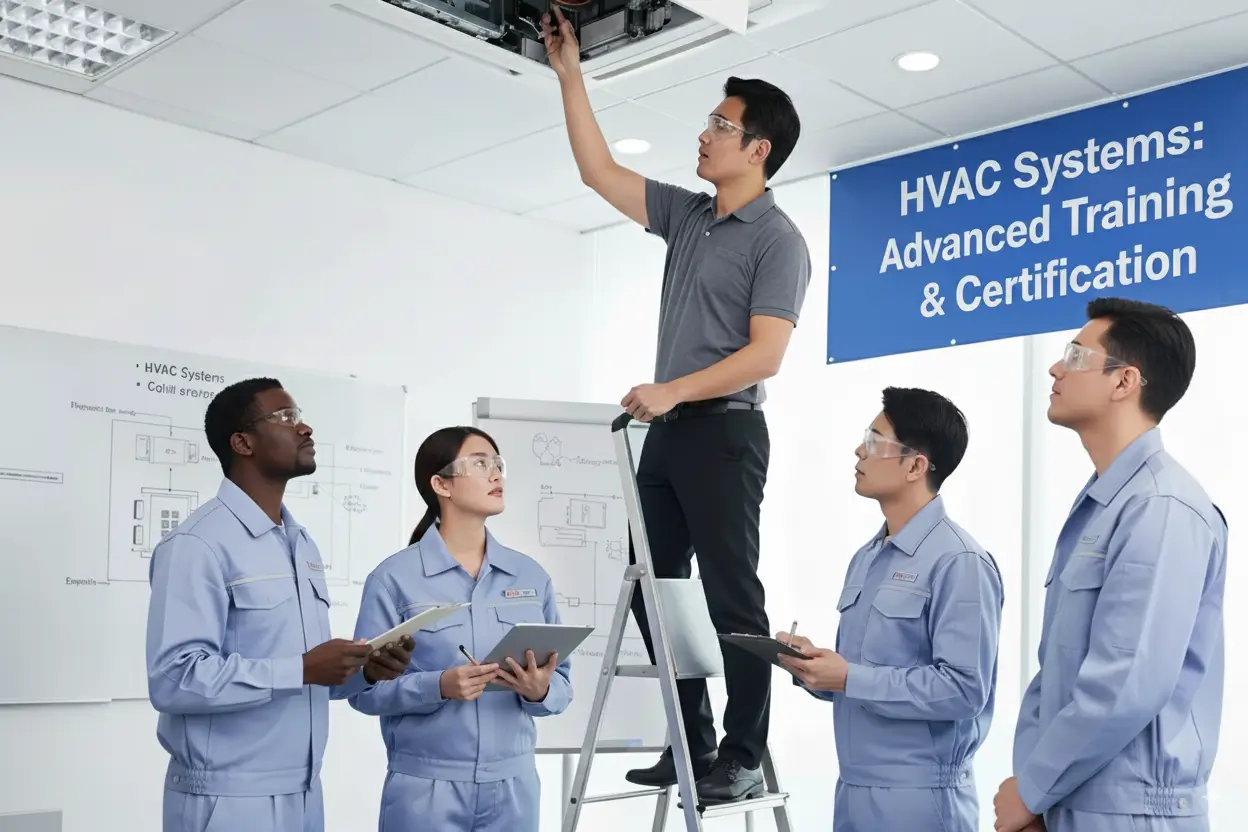
Completion Criteria:
▪ Duration - 15 weeks
▪ 120 questions assessment exam - minimum 80% score
▪ Capstone Project – minimum 80% score
Overview:
Advanced HVAC Skills with ImmerseLearn VR
The HVAC Technician program at ImmerseLearn is built for students who are ready to go beyond the basics. Through immersive Virtual Reality (VR) simulations, learners practice real-world HVAC diagnostics, repairs, and installations—gaining hands-on experience from anywhere.
Program Highlights:
▪3-Month Online HVAC Technician Program
▪Includes VR Headset and Immersive Simulations
▪100% Online, Flexible, and Self-Paced
▪Covers Advanced Diagnostics, Repairs, and Installations
▪1:1 Student Support and Job Readiness Coaching
▪Includes all required training and mandates sitting for the NATE HVAC Support Technician Certification Exam upon completion
▪60+ Hours of Hands-On VR Training—from Your Living Room!
Enroll Today and Advance Your HVAC Career!
60 Hours of Hands-On Training – From Your Living Room!
HVAC Training with VR
Students earn their NATE certification upon completing the program and successfully passing the NATE certification exam.
Ready to Master HVAC Troubleshooting and Diagnostics?
The ImmerseLearn HVAC Technician program is engineered for aspiring professionals who want to level up their skills fast. This immersive, online training experience prepares you for real-world HVAC challenges in just a few months-not years. The program covers critical components such as electrical systems, refrigerant circuits, airflow diagnostics, and gas heating systems-empowering students to troubleshoot, repair, and install HVAC systems with confidence.
Prerequisites:
To enroll in this program, students must have at least one year of work experience in HVAC or must have successfully completed the HVAC Associate program.
The program will cover the following:
▪Diagnosing and replacing fuses, breakers, contactors, transformers, thermostats, and relays
▪Identifying and replacing faulty high/low pressure switches, sequencers, time delay relays, motor starters, and circuit boards
▪Performing refrigerant recovery, evacuation, and precise refrigerant charging
▪Installing a mini-split heat pump from start to finish
▪Servicing pressure relief valves, expansion tanks, and water pressure reducing valves in hydronic systems
